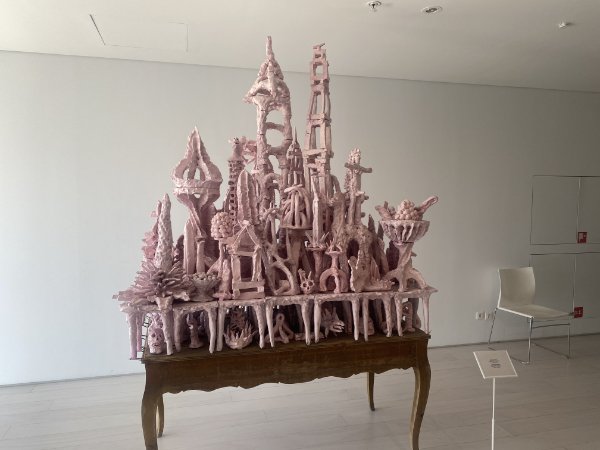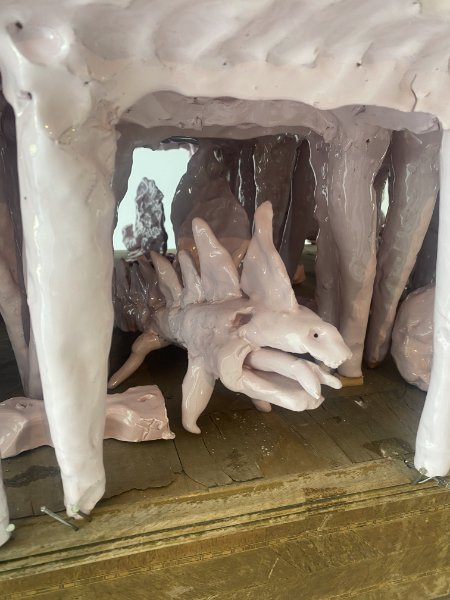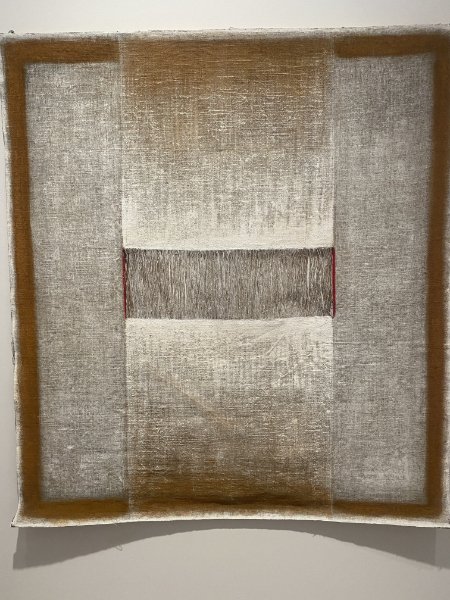Art & Politics
/In last Wednesday’s post, I posed the question, “Must artists respond to the social issues of their time?” At the Greek National Museum of Contemporary Art in Athens (EMST for short), the answer seems to be yes for about half the collection. As Daphne Vitalis, the EMST curator for painting & three-dimensional works, puts it in her introductory essay, the museum is not “a secular ‘sanctuary’ of the art of the past, but one the produces and promotes contemporary culture and thus needs to offer a reading of today’s world, acting as a factory of artistic creation and critical thought.”
She continues: “The current debates around art and politics focus largely on artistic activism, i.e., on art’s capacity to function as a means of political dispute and social activism.” Indeed, the permanent collection exhibit on the third floor in particular is devoted to art portraying the dispossessed, the refugees and immigrants that pour through Europe attempting to escape violence and poverty at home as well as the poor and downtrodden at home.
It is not a comforting exhibit, needless to say.
Here is Memorial to 418 Palestinian Villages which were Destroyed, Depopulated, and Occupied by Israel in 19848 (2001), by Emily Jacir.
Jacir stenciled the names of those villages on a refugee tent and invited people to embroider them. From the museum’s catalog: “Over a period of three months, more than 140 volunteers from different countries — including Palestinians and Israelis alike — paid a visit to Jacir’s studio to embroider, argue, sing, remember, and learn. The political message is eloquent and clear. The work’s title itself has been carefully selected so as to offer the desired emphasis, without allowing any room for misinterpretation, embellishment, or exoticism.”
Fix It, by Mona Hatoum, is the first piece that greets you as you get off the escalator to the third floor:
EMST is located in the defunct Fix brewery which was gutted and renovated. Hatoum selected material from the brewery to create an installation that is both disturbing and fascinating.
Untitled (2004), by Jannis Kounellis, is impressive.
I don’t know that I agree with the official description: “The table resembles a sacrificial altar, while the entire space surrounding it transforms into an emotive, solemn, and profoundly spiritual environment.”
I agree that the table, loaded with bags filled with charcoal, seems like an altar, but the sacrificial gift of material that is essentially a suffocated, incomplete by-product of purifying fire seems sinister. Also, the entire piece reminds me of the efforts to design a system of markers to deter future humans from breaking into a nuclear waste storage facility: “This place is not a place of honor...no highly esteemed deed is commemorated here... nothing valued is here.”
Kutlug Ataman’s 99 Names uses his Sufi mysticism to create an intense multi-screen portrayal of religious ecstasy.
NOTE: For some reason, SquareSpace is not finding the video link above. I’ll fix it when I can. In the meantime, here’s the link: https://youtube.com/shorts/AZ62-lXERoE?feature=share
Is this political art? In a Christian-majority nation — Greek Orthodox, at that — yes, it is. (I wore my Utilikilt throughout our tour of Greece, and I was cautioned by our guide that the monks at the monastery we were slated to visit might not let me in; they might think I was making fun of them, since they require men to wear long pants and women to wear skirts/dresses. This despite the fact that the Greek national costume is practically a kilt itself (and the monks would be wearing gowns.))
A Glacier at Our Table (2013), by Nikos Tranos, is a response to the meltdown of the Fukushima nuclear power plant in 2011: the pink glaze mimics the color of the signs in the hospital unit where the plant workers were treated after the explosion. The grotesque, mutant lifeforms create a teeming mass of unfamiliar and frightening items.
Not every piece in EMST is political in nature, of course. There’s plenty of minimalism, dadaism, and conceptual art to go around. Here are two of my favorites, paintings by Michalis Katzourakis:
Toile Blanche (1976)
Untitled, (1978–79)
Another minimal abstraction I really liked, I/1977 (1977) by Danil.
I liked the Paul Klee rough texture, but it was this detail in the center that delighted me:
The artist says, “The painting is produced by its destruction,” which is an awfully art school major kind of thing to say.
So what’s the upshot of all this? Should art be political? Should art avoid politics? Can art avoid politics?
More thoughts next Wednesday — I’m headed out of town for the To The Moon burn.













